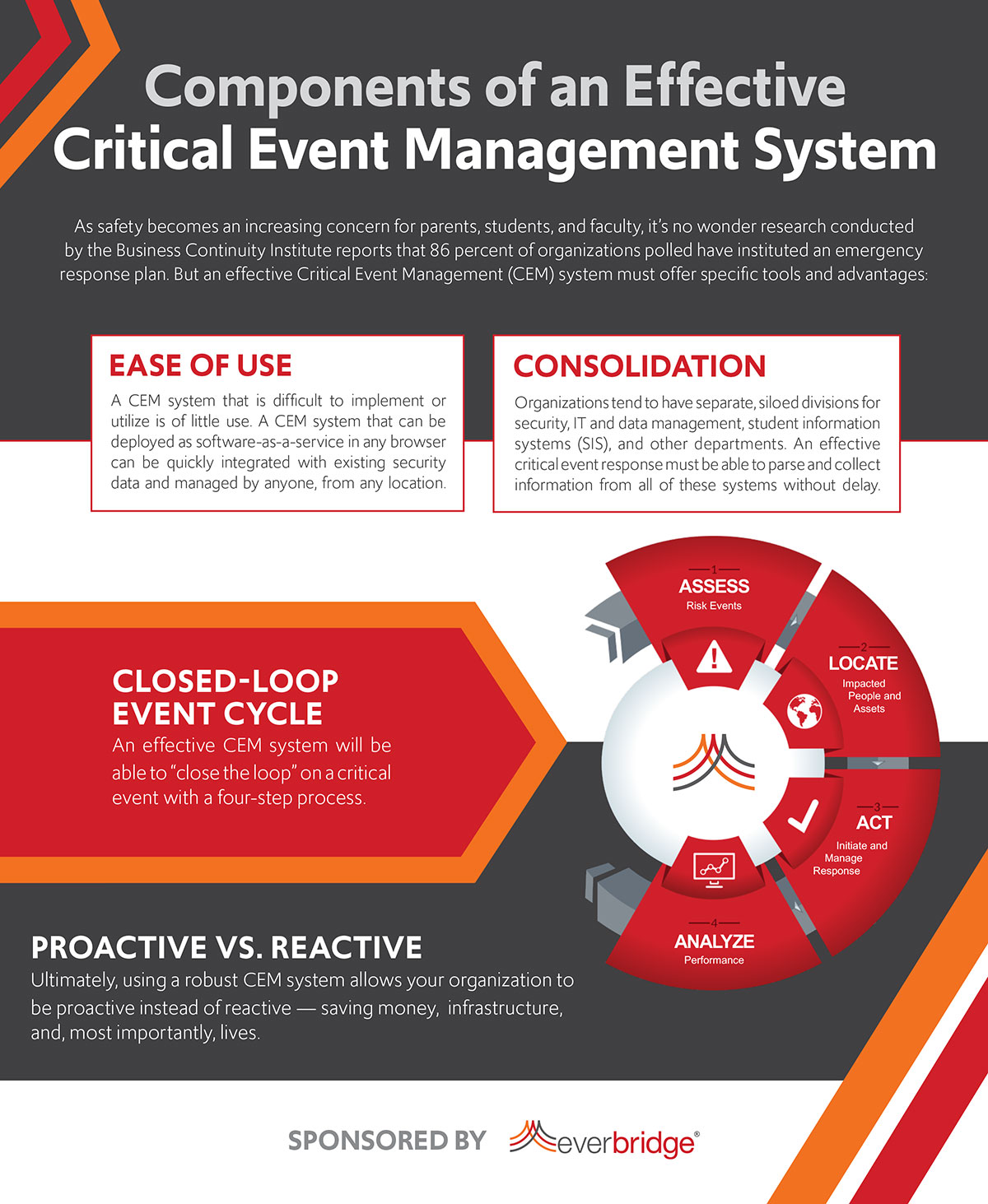With safety a priority, securing your campus against disasters both natural and man-made begins with a critical event management system.
Campus safety has never been more important. In a survey conducted by education resource company Noodle, 75 percent of respondents listed a “safe environment” as a priority when it came to choosing a school. But the definition of a safe environment has gone far beyond a few security officers and some cameras — modern-day security is determined by an institution’s handling of critical events.
“What it comes down to is there are things you care about, and there are things that you worry about,” says Imad Mouline, chief technology officer at Everbridge, an emergency communications company. “If the things that you worry about impact the things that you care about, that’s a critical event.”
Managing critical events
Whether the campus in question is a small college, a large teaching hospital, or another type of institution, the definition of what constitutes a critical event has broadened to include natural disasters like earthquakes or hurricanes, active-assailant scenarios, or even terrorist threats far away from the physical campus.
“The scope has changed,” notes Mouline. “The duty of care has expanded to cover anybody who happens to be on campus and to cover people affiliated with the school, regardless of where they are.”
This expanding scope has made it an absolute necessity that every campus has a Critical Event Management System (CEM) in place. A software platform can analyze the huge volume of information generated by both campus communications and security systems as well as global events that can potentially impact students, faculty or staff associated with the institution.
Critical events can also be more routine and smaller in scale — such as managing annual commencement or a sporting event. Processes and management can often require the same diligence and coordination as with larger disasters.

Another reason an integrated software platform for managing critical events is essential is speed — when critical events occur, the speed of response is critical. “That’s what a CEM allows you to do,” says Mouline, “notice something has happened as quickly as possible, letting you know that you need to care about it, tell you what the scope is, and trigger the appropriate protocols to help you minimize or eliminate the impact.”
Consolidation
CEM offers one other huge benefit: consolidation of emergency response resources. Managing critical events requires security and emergency management personnel to continuously know where their student, faculty, or staff populations are, what’s happening in those locations, and how those events might impact those specific people. It’s almost impossible to manage this level of real-time data without a CEM software solution.
“Chances are, you will miss somebody, you will miss something,” warns Mouline. “It’ll take you longer, and you’ll end up being reactive. In many cases, the response to one of these critical events can have more of an impact than the critical event itself.” It would be easy, for example, to overlook populations with special needs, such as students who cannot self-evacuate.
Everbridge’s CEM platform (which is delivered as customizable software-as-a-service through any web browser, requiring no local installation) closes the loop on the critical event cycle with a four-step process:
- Assess events culled from data sources including local security systems and world news
- Locate students or other groups impacted by these events
- Act by initiating response protocols and alerting emergency response teams
- Analyze the event and the response to determine how plans can be improved
Modern campus security needs to be proactive, wide in scope, and consolidated to keep students, faculty, staff, patients, or visitors on campus safe. A robust critical event management platform can augment existing data and security systems to ensure that the campus — both locally and globally, wherever students or faculty happen to be — is safe. With increasing competition to attract the best and brightest students, faculty, and staff, a CEM platform is no longer a nicety; it is a requirement that can directly impact an institution’s bottom line.


